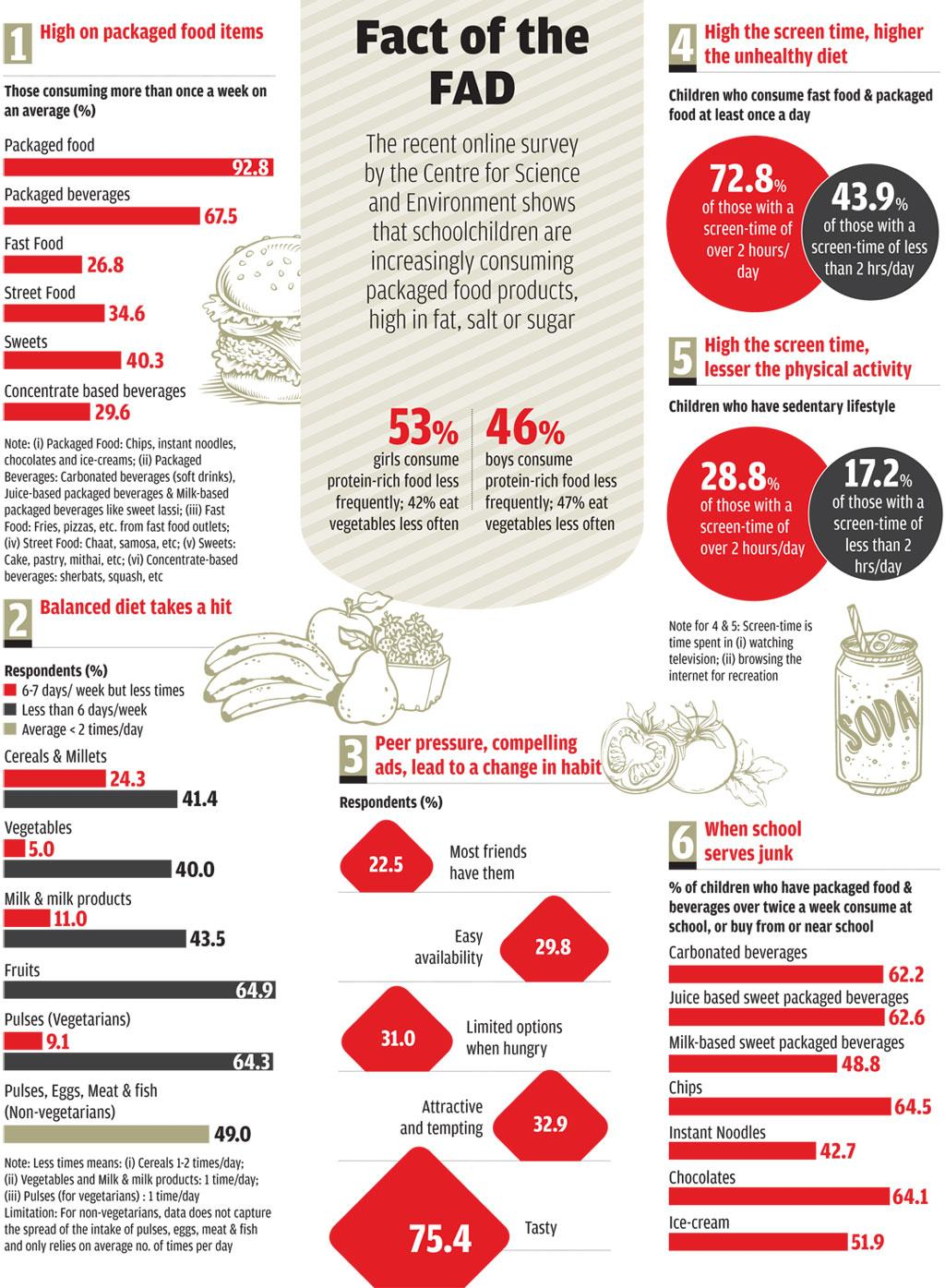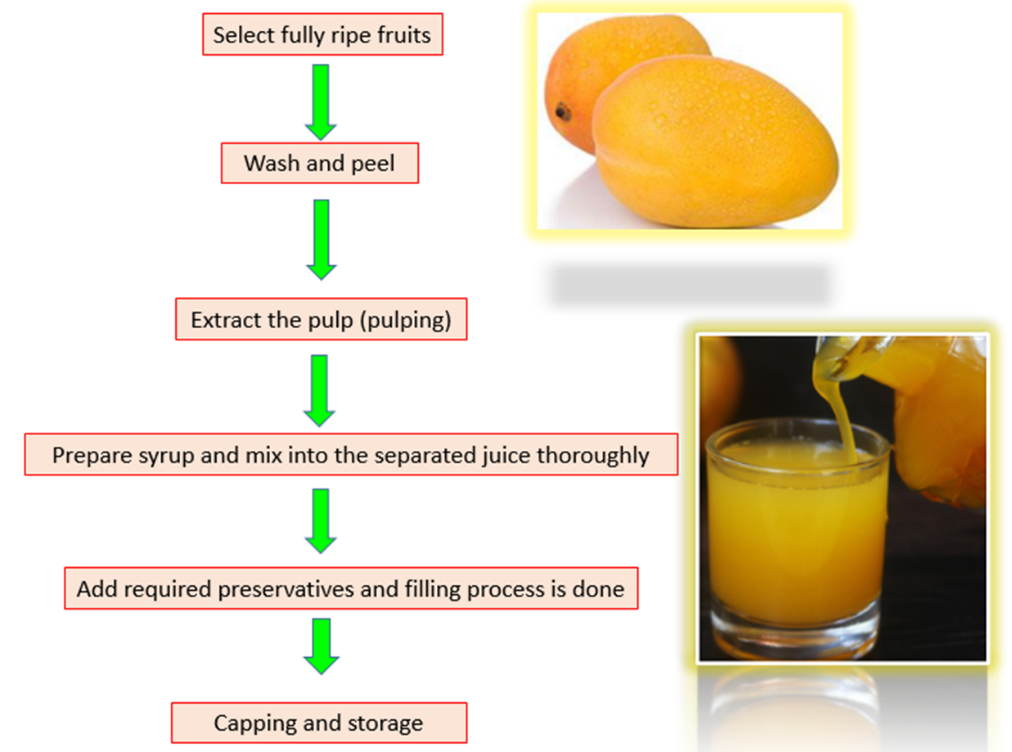Surge in India’s Ultra Processed Food Market | 24 Nov 2025
For Prelims: Ultra-Processed Foods (UPFs), Diabetes, NFHS 2016 to 2019–21, Gut Microbiome, Economic Survey 2024-25, FSSAI, WHO, World Food Safety Day, Eat Right India
For Mains: Key aspects of Ultra-Processed Foods (UPFs), their direct link to the rising burden of non-communicable diseases in India, and steps needed to curb their impacts.
Why in News?
A series in The Lancet highlights that India is witnessing the fastest growth in sales of Ultra-Processed Foods (UPFs) globally — from USD0.9 billion in 2006 to nearly USD 38 billion in 2019, a ~40‑fold rise.
- This rapid dietary transition is closely tied to rising rates of obesity, diabetes, and cardiovascular diseases in India.
What are Ultra-Processed Foods (UPFs)?
- About: UPFs are industrial formulations created for convenience, long shelf life, and mass consumption. They rely heavily on manufactured ingredients, preservatives, and additives rather than whole, natural foods.
- Common examples include soft drinks, chips, chocolates, ice cream, sweetened breakfast cereals, packaged soups, and various ready-to-heat meals.
- Reasons for Surge in UPF Consumption:
- Aggressive Marketing: Celebrity endorsements, buy-one-get-one-free offers, and sports sponsorships, targeted ads—especially aimed at children— boost consumption.
- Lifestyle Changes: Fast-paced urban living boosts dependence on quick, convenient, and ready-to-eat options.
- Cultural Dietary Shifts: Growing preference for Western-style diets has increased the intake of fast food, sugary snacks, and ready-to-eat meals.
- Alternative Food Option: Ultra-processed foods are viewed as time-saving alternatives to traditional meal preparation, helping working individuals balance their professional and personal lives more easily.
- Difference between Processed from UPFs: Processed foods involve minimal changes like washing, cooking, or canning and retain their natural structure, while UPFs contain industrial starches, protein isolates, flavours, additives, and emulsifiers—and the presence of any such additive classifies a product as a UPF.
Food Processing
- About: It refers to transforming raw agricultural products such as grains, meats, vegetables, and fruits into more valuable and convenient food products while ensuring minimal waste.
- Types:
- Minimally Processed: These include fruits, vegetables, milk, fish, pulses, eggs, nuts, and seeds that have no added ingredients and undergo only minimal changes from their natural state.
- Processed Ingredients: These are items like salt, sugar, and oils that are added to other foods rather than eaten alone.
- Processed Foods: Made by combining minimally processed and processed ingredients, these are foods that can typically be prepared at home, such as jam, pickles, and cheese.
- Ultra-Processed Foods: These are industrially manufactured products containing ingredients not typically used in home kitchens.
How is the Surge in UPF Consumption Affecting India?
- Nutritional Deficiency: UPFs are high in fat, sugar, and salt (HFSS) and contain additives like stabilisers, emulsifiers, colourants, and artificial flavours. They are energy-dense but nutrient-poor, leading to excess calorie intake and poor diet quality.
- Severe Health Impacts: UPFs are linked to a higher risk of 12 major health issues, including obesity, Type 2 diabetes, hypertension, heart, kidney, and gastrointestinal diseases, depressive symptoms, and premature death.
- The Indian population is genetically predisposed to visceral obesity and metabolic diseases, making the harmful effects of UPFs even more severe.
- High Risk for Children: Childhood obesity has risen sharply—from 2.1% to 3.4% (NFHS 2016 to 2019–21). Long-term harms include addictive eating behaviours, gut microbiome imbalance, impaired brain development, and early onset of obesity and diabetes.
- Weak Regulatory Environment: India largely depends on self-regulation, and the absence of mandatory front-of-pack warning labels lets companies hide HFSS content behind marketing claims. The Economic Survey 2024-25 highlights the urgent need for stronger regulations.
- Difficulty in Identifying UPFs: Misleading packaging (e.g., high protein) hides high sugar, salt, and fat. Many also confuse ultra-processed foods with processed foods.
India’s Initiatives to Promote Healthy Food Habits
What Measures can be Taken to Limit the Consumption of UPFs?
- Implement Strong Regulations and Policies: Implement mandatory front-of-pack warning labels clearly indicating “High in Sugar/Salt/Fats” and enforce strict rules to limit aggressive marketing, especially to children.
- Create Healthy Food Environments: Emulate successful models like Brazil’s by ensuring school canteens serve minimally processed foods, while public spaces should limit UPFs and make healthier alternatives more accessible.
- Nationwide Public Awareness Campaign: Encourage consumers to avoid products with over 10% sugar or fat, avoid those where sodium exceeds 1 mg per kcal, and choose whole foods like milk, nuts, fruits, and vegetables over packaged items.
- Improve Monitoring and Research: Fund research to measure how much of the Indian diet—especially for children and youth—comes from UPFs, identify the specific products consumed, and understand the reasons behind these choices to support targeted regulation.
- Global and National Coordination: Align regulations with the upcoming WHO standards on UPFs and involve health authorities, FSSAI, the education sector, industry, and civil society to ensure a coordinated national response.
- The WHO advises adults and children to keep free sugar intake below 10% of total daily energy, with an extra benefit if reduced to 5% or about 25 grams (6 teaspoons) per day.
Conclusion
India's rapid dietary shift towards ultra-processed foods, driven by aggressive marketing and weak regulation, is fueling a public health crisis of obesity and diabetes. An urgent, multi-pronged strategy involving stringent front-of-pack warning labels, marketing restrictions, public awareness, and creating healthy food environments, especially in schools, is imperative to safeguard the nation's health.
|
Drishti Mains Question: Q. Examine the role of ultra-processed foods (UPFs) in the rising burden of non-communicable diseases in India and suggest policy measures to mitigate the risk. |
Frequently Asked Questions (FAQs)
1. What are ultra-processed foods (UPFs)?
UPFs are industrial formulations using manufactured ingredients, additives (emulsifiers, stabilisers, flavours) and long-shelf technologies, designed for convenience—e.g., soft drinks, chips, ready-to-heat meals.
2. How rapidly have UPF sales grown in India?
Retail sales rose from USD 0.9 billion (2006) to ~USD 38 billion (2019)—a 40-fold increase, signalling a fast dietary transition linked to rising obesity.
3. Which health risks are associated with UPF consumption?
UPFs (HFSS) are linked to obesity, Type-2 diabetes, hypertension, heart and kidney diseases, gastrointestinal disorders, depressive symptoms and higher all-cause mortality.
UPSC Civil Services Examination, Previous Year Question (PYQ)
Prelims
Q. Aspartame is an artificial sweetener sold in the market. It consists of amino acids and provides calories like other amino acids. Yet, it is used as a low-calorie sweetening agent in food items. What is the basis of this use? (2011)
(a) Aspartame is as sweet as table sugar, but unlike table sugar, it is not readily oxidized in human body due to lack of requisite enzymes
(b) When aspartame is used in food processing, the sweet taste remains, but it becomes resistant to oxidation
(c) Aspartame is as sweet as sugar, but after ingestion into the body, it is converted into metabolites that yield no calories
(d) Aspartame is several times sweeter than table sugar, hence food items made with small quantities of aspartame yield fewer calories on oxidation
Ans: (d)
Mains
Q. What are the challenges and opportunities of the food processing sector in the country? How can the income of the farmers be substantially increased by encouraging food processing? (2020)



